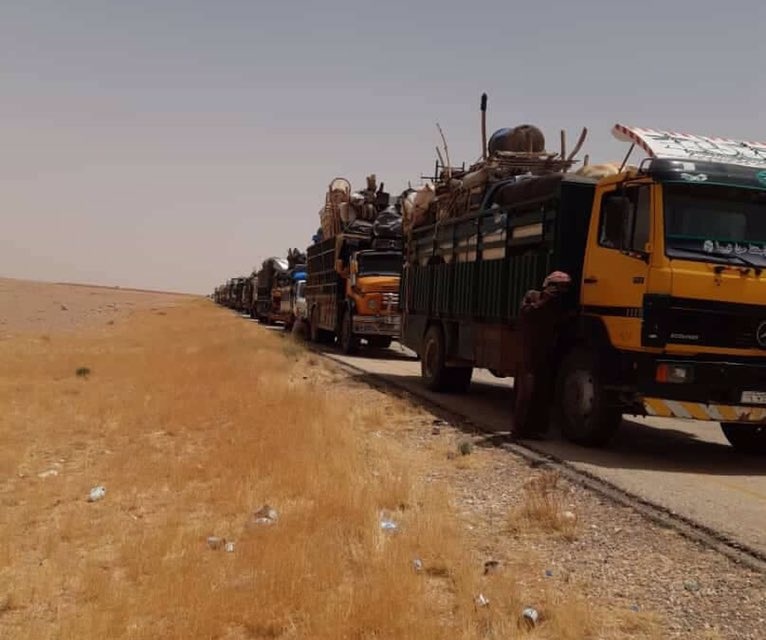Residents leave Rukban camp in southeast Syria after months of siege, July 17, 2019
UPDATE, 1230 GMT:
The US Special Representative for Syria, James Jeffrey, has explained why the US military is refusing to help the besieged Syrians in the Rukban camp as they face starvation.
.@joshrogin: We have the capability to feed [people starving in Syria], why not just feed them?
James Jeffrey, US Special Representative for Syria: “If we feed them, it will look like we’re going to stay there forever.”
Watch more: https://t.co/m0MmgwvOtO #AspenSecurity pic.twitter.com/mvGD6n86sB
— The Aspen Institute (@AspenInstitute) July 20, 2019
ORIGINAL ENTRY: Despite fears of detention and uncertainty over the status of their property, hundreds of displaced Syrians have left the besieged Rukban camp in the southeast of the country.
Local sources said about 700 people, facing the critical shortages of food, medicine, and other supplies, accepted transfer to their home areas on Wednesday. The Russian “Center for Reconciliation” put the number at 463.
A well-placed source said more residents would have departed except for a claim from Homs Province, where they are being taken, that another returnee had been arrested.
On July 2, at least 500 people and up to 1,500 were taken by buses out of the camp in the barren area near the Jordanian border.
See also Syria Daily, July 4: Facing Starvation, Another 1,500 Leave Besieged Rukban Camp
More than 50,000 people once lived in the makeshift camps, having fled home areas since 2015 because of Islamic State attacks. Activists now estimate the number at about 6,500.
In February, more than 90% said they wanted to return home, but all said they were wary because of fears of regime detentions, intimidation, and forced conscription and of uncertainty over status of property. Several men have been killed by regime security personnel in holding centers in Homs, and many have been taken away for interrogation.
Many residents have been pushed to the point of starvation or death from poor conditions because of a regime siege since last autumn. The main route into the camp was cut off, preventing Bedouin traders from bringing in food and essential goods. The Assad regime has allowed only two aid convoys since January 2018.
Russia supported the siege with propaganda, declaring “humanitarian corridors” to cover up the fears of residents and putting out propaganda blaming “militants” and the US.
Rukban is within a 55-km (34-mile) security zone around the American at Tanf on the Iraqi border. The camp’s plight was compounded by Jordan’s cut-off of the border in 2016 after an Islamic State suicide attack.
Residents and activists reported this spring that bread and flour are close to exhaustion, forcing a diet of lentil soup. Prices for vegetables and oil soared. Many women could no longer breast-feed infants, and baby formula was absent.
“We’re living here on the cusp of death — conditions in Rukban are worse than zero,” said the head of one family.
See also Syria Daily, June 25: “Cusp of Death” — No Bread or Flour in Besieged Rukban Camp
The camp has only rudimentary clinics, with no doctors and a lack of essential medical supplies. Emergency cases are supposed to be evacuated to Jordan, but the process has been difficult. Last month, a woman and her newborn son died when they could not be moved and there was no response to calls for an ambulance.

